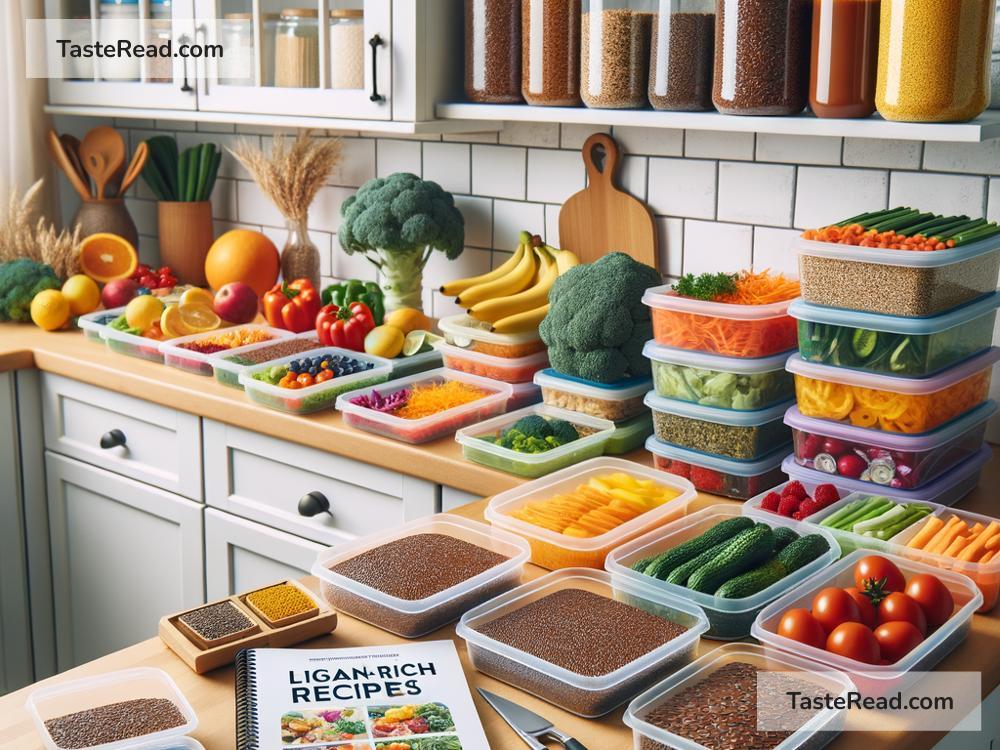How to Plan Meals for Optimal Lignan Intake
If you’ve heard about lignans, you might already know that they’re natural compounds found in certain plants, seeds, and grains. They come with incredible health benefits, particularly for heart health, hormonal balance, and even reducing the risk of certain cancers. But how do you incorporate lignans into your daily diet? Planning meals for optimal lignan intake doesn’t have to be complicated—it’s all about picking the right foods and building simple, tasty meals around them. Here’s a step-by-step guide to help you get the most from this nutrient!
What Are Lignans?
Before we jump into meal planning, let’s understand what lignans actually are. Lignans are a type of plant compound classified as phytoestrogens, meaning they mimic estrogen in the body. Found mostly in seeds, whole grains, fruits, and vegetables, lignans have antioxidant and anti-inflammatory properties. They’re also known for supporting heart health, improving gut health, and reducing the risk of hormone-related cancers like breast and prostate cancer.
Flaxseed is the richest source of lignans, followed by sesame seeds, whole grains, berries, and vegetables. To capitalize on their benefits, you’ll want to include these nutritious foods in your daily meals.
Step 1: Identify Lignan-Rich Foods
The first step in meal planning is knowing which foods are high in lignans. Here’s a quick breakdown:
- Superstars: Flaxseeds and sesame seeds are at the top of the list. Just 1-2 tablespoons of ground flaxseeds can provide a huge lignan boost.
- Whole Grains: Rye bread, whole wheat, oats, and barley contain lignans.
- Fruits: Strawberries, apricots, and oranges have moderate amounts of lignans.
- Vegetables: Broccoli, carrots, spinach, and kale are lignan-friendly choices.
- Legumes: Lentils, beans, and soy-based foods like tofu also contain lignans.
With these foods in mind, you’re ready to start building lignan-loaded meals!
Step 2: Incorporate Lignans at Every Meal
Planning meals for optimal lignan intake means spreading these foods across breakfast, lunch, dinner, and even snacks. Here’s how:
Breakfast:
- Flaxseed Smoothie Bowl: Blend yogurt with fresh strawberries, apricots, and spinach, then sprinkle ground flaxseeds on top. This is a simple way to pack lignans into your morning.
- Oatmeal with Flaxseeds: Stir a tablespoon of ground flaxseeds into your oatmeal, then add sliced fruits like banana and berries for extra flavor and nutrients.
- Whole Grain Toast with Toppings: Spread almond butter on rye or whole wheat toast and sprinkle sesame seeds on top for crunch.
Lunch:
- Veggie-Packed Salad: Build a salad with kale, spinach, broccoli, and shredded carrots. Add lentils or chickpeas for protein, and sprinkle sesame seeds or crushed flaxseeds for lignan power.
- Grain Bowl: Combine quinoa, barley, or brown rice with roasted vegetables and tofu. Toss in sesame seeds or flaxseeds as a garnish.
- Whole-Grain Sandwich: Use rye or whole wheat bread and layer with avocado, lettuce, tomatoes, and grilled chicken or hummus.
Dinner:
- Sesame Crusted Fish: Coat salmon or tilapia fillets with a mixture of sesame seeds, garlic, and olive oil, then bake until golden. Pair it with steamed veggies like broccoli or carrots.
- Vegetable Stir-Fry: Sauté spinach, kale, and carrots with tofu or tempeh in sesame oil. Add a sprinkle of sesame seeds and serve over brown rice or barley.
- Lignan-Loaded Soup: Make lentil soup with chopped tomatoes, spinach, and carrots for a comforting, nutritious option.
Snacks and Desserts:
- Flaxseed Energy Balls: Mix ground flaxseeds with oats, peanut butter, and honey, then roll into bite-sized balls for a healthy snack.
- Fruit Salad with Sesame Seeds: Combine oranges, strawberries, and apricots, and sprinkle sesame seeds for added goodness.
- Whole-Grain Crackers with Dip: Pair rye or whole grain crackers with hummus or guacamole for an easy and lignan-rich snack.
Step 3: Be Consistent
The key to getting optimal lignan intake is consistency. You don’t need to eat massive amounts of flaxseeds and sesame seeds at one time—small servings spread throughout your day will help your body absorb and use them effectively. For example:
– Aim to include 1-2 tablespoons of flaxseeds daily.
– Introduce sesame seeds as a topping, or mix them into bread or salad dressings.
Step 4: Prepare Foods Correctly
For the best lignan absorption, it’s important to prepare foods properly. Ground flaxseeds are easier to digest and absorb compared to whole seeds, so grind them before using. Store flaxseeds in a cool, dry place to keep their nutrients intact. Sesame seeds can be lightly toasted for extra flavor without losing their health benefits.
Step 5: Pair Lignan Foods with Other Nutrients
To get the most out of your lignan-rich meals, pair them with foods rich in fiber, healthy fats, and protein. For example, combine flaxseeds with yogurt or soy milk to boost calcium absorption and improve digestive health. Pair sesame seeds with avocado or olive oil for healthy fats. Variety is key to a balanced diet and optimal nutrient absorption.
Final Thoughts
Planning meals for optimal lignan intake doesn’t require drastic changes to your diet—it’s about making small but impactful adjustments. Start by adding ground flaxseeds or sesame seeds to your meals, and include whole grains, fruits, and vegetables to round things out. With consistency and creativity, you’ll be able to enjoy the health benefits of lignans while eating delicious, nutrient-packed meals every day.
Happy eating! 🌱


